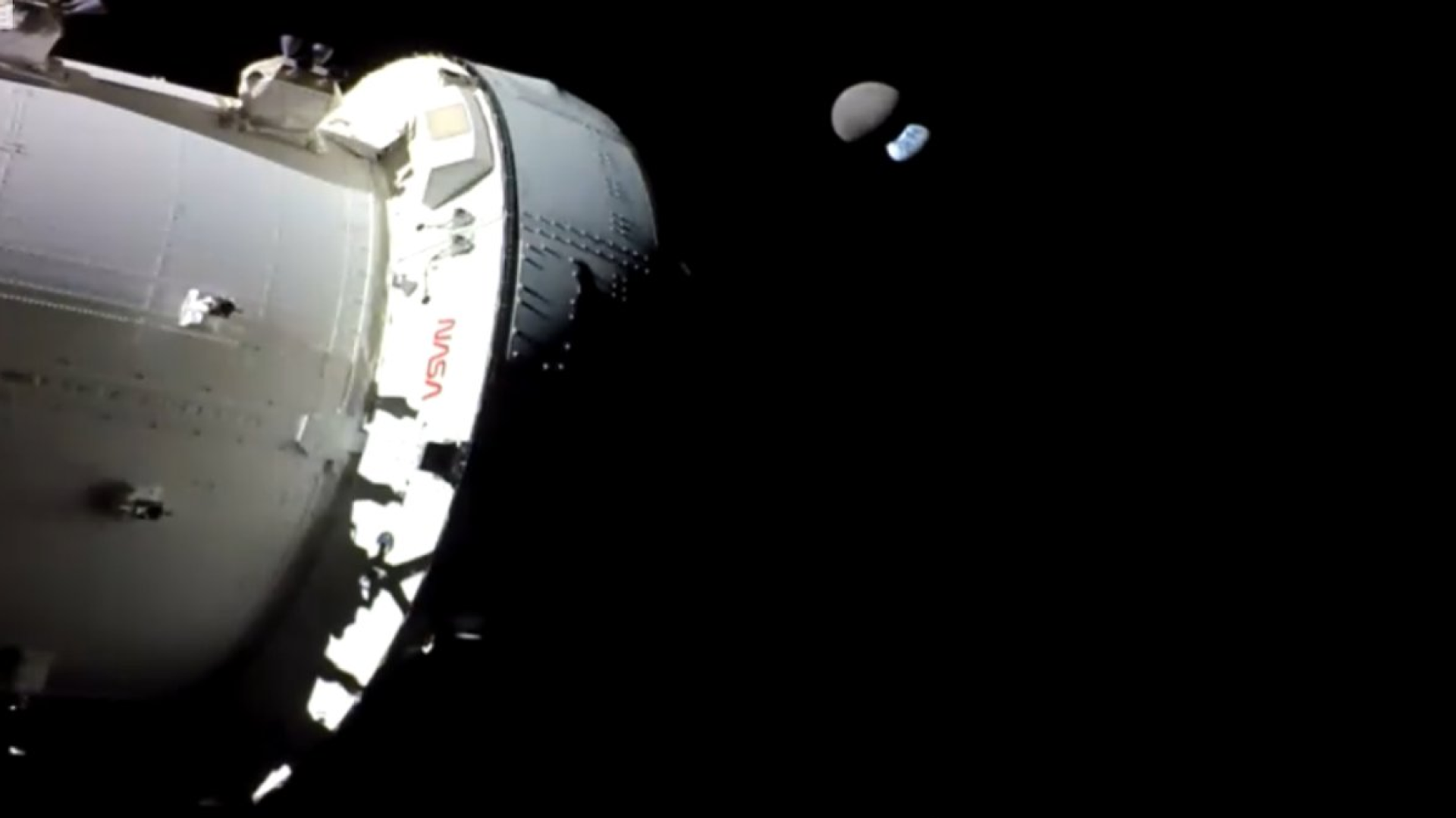NASA Shares Stunning ‘Earth Eclipse’ Photo as Orion Sets Distance Record for Crew-Rated Spacecraft

© NASA
Subscribe
The Artemis 1 mission set a new record on Monday for the furthest distance a spacecraft rated to carry human crew members has ever traveled from our planet. The record was set at the apex of a special long orbit of the moon as the Orion capsule tested out its capabilities.
The US space agency NASA said on Monday that Orion had reached a distance of 268,554 miles from Earth, or roughly 40,000 miles beyond the moon’s orbit. As it neared the acme, Orion’s camera snapped a never-before-seen image of the moon eclipsing the Earth - typically, we see the opposite here on Earth, as the moon eclipses the sun in a solar eclipse or the Earth eclipses the moon in a lunar eclipse.
This is RIGHT NOW. @NASA_Orion is looking back at Earth and the Moon from distant retrograde orbit. Watch the #Artemis I livestream: https://t.co/Qx1QFUdD08 pic.twitter.com/zMTorYQvjS
— NASA (@NASA) November 28, 2022
The photo recalls the famous “pale blue dot” photo snapped by Voyager 1 as it passed Neptune’s distant orbit in February 1990, in which the Earth appears as little more than a bright star, indistinguishable from other cosmic specks of light.
A quarter of a million miles is by no means the furthest a human-built spacecraft has traveled. Numerous probes have visited every planet in the solar system, and the Voyager probes have left the solar system entirely and entered interstellar space. However, it is the furthest any spacecraft intended to carry humans has ever dared venture from our planet.
Orion doesn’t have any humans on it yet, though - that’s not expected to happen until the Artemis 2 mission in late 2024, if all goes according to plan. However, it does have three human-like mannequins on-board to test the stresses placed on the human body during the mission, and several scientific experiments. The Artemis 1 mission is intended to test out the capabilities of the Space Launch System rocket and the Orion capsule as they run through all their mission activities, including the dangerous reentry of Earth’s atmosphere. It’s expected to do so on December 11.
Humans haven’t left low Earth orbit since December 1972, when the last Apollo spacecraft carried two astronauts to the moon and back. This time, however, we intend to stay on the lunar surface. The US and China, among other countries, have laid out plans to begin constructing a permanent lunar base in the next few years, intended to serve as a base of operations for exploring the moon as well as the rest of the solar system.
